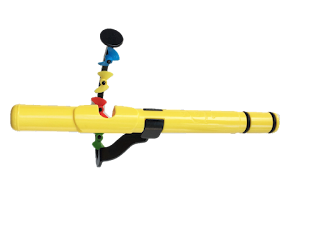Immunizations
Parasite Lifecycles Jump Page
Parasite Lifecycles Jump PageParasite Lifecycles Jump Page
This page has four parasite lifecycles for you to review;
The lifecycle of the malaria parasite Plasmodium spp. Malaria can be fatal during the acute phase and causes permanent and severe liver damage in the chronic phase.
The lifecycle of the Leishmania spp. This parasite causes widespread Leishmaniasis. This disease includes potentially fatal visceral infections, but more commonly causes dermal sores that can lead to permanent disfigurement.
The lifecycle of Trypanosoma cruzi which causes trypanosomiasis, or Chagas disease. This disease leads to fatal paralysis of the autonomic nervous system.
The life cycle of Wuchereria bancrofti, the causitive agent of the disfiguring disease elaphantiasis.
For more information on parasite lifecycles see Olsen (1974).
Back to Main Page
Deadly Parasite 'jumped' From Gorilla To Humans
A rare and unfortunate sequence of events allowed a deadly type of malaria in gorillas to "jump" species and attack humans, according to scientists.
Hundreds of thousands of people die from malaria every year and Plasmodium falciparum - the type the researchers studied - accounts for most cases.
African great apes were the original host to the parasite.
But a chance genetic mutation about 50,000 years ago turned it into a threat to humans, experts have found.
Mosquito bites
The findings, published in the journal PLoS Biology, could help uncover new ways to fight malaria, the Wellcome Sanger Institute researchers hope.
Malaria is caused by a parasite that gets into the bloodstream when an infected mosquito bites humans - or animals.
There are lots of different strains of parasite and one of the most important ones, which now affects only humans, is Plasmodium falciparum.
It switched host from gorillas at about the same time as the first migration of humans out of Africa, some 40,000 to 60,000 years ago, the researchers say.
They studied the genetic make-up of different ancestral types of malaria parasite, focusing in particular on a gene called rh5 - the vital bit of DNA code that enables malaria to infect human red blood cells.
It is a target doctors are very interested in for developing new malaria vaccines.
The researchers believe thousands of years ago, two types of malaria parasite happened to co-infect a gorilla and they exchanged some genetic material between them.
Plasmodium falciparum picked up the rh5 gene.
Lead author Dr Gavin Wright said: "This was a very rare event that led to so much death and disease in humans.
"We were quite surprised by the findings. It was very satisfying because it makes sense with lots of other research that has been done by colleagues. It provides this molecular explanation now as to how this jump could have occurred.
"Rh5 currently is an important blood stage vaccine candidate for malaria and so if we can get any more information on this gene, that could really help us in trying to combat this disease."
He said the chances of the parasite mutating again soon were "very, very slim", although theoretically possible.
Nearly half of the world's population is at risk of malaria. The most cases and deaths occur in young children in sub-Saharan Africa, caused by Plasmodium falciparum.
Resistant malaria spreading in South East Asia
Defeat malaria in a generation - here's how
'Landmark' child malaria vaccine rolled out
AMA1–RON2 Complex-Based Vaccine Against Malaria
This technology relates to a malaria vaccine composed of a protein complex of Apical Membrane Antigen (AMA1) and rhoptry neck protein 2 (RON2) with an adjuvant. AMA1 is a crucial component of the Plasmodium invasion machinery and is a leading candidate for antimalarial vaccine development. AMA1-based vaccines have shown ability to block red cell invasion in in vitro assays, but protection has so far not translated to in vivo human infections. NIAID investigators have demonstrated that interaction between AMA1 and RON2 (or peptide thereof) is essential for malaria parasites to successfully enter human red blood cells (RBCs). Vaccination with un-complexed AMA1 and RON2 did not protect against lethal malaria. However, vaccination with a pre-formed AMA1– RON2 complex, highlighted in this technology, produced antibodies that protected against lethal malaria in an in vivo mouse model (P.Yoelli) and blocked the entry of human malaria parasites into RBCs in vitro. Additionally, the inhibitory antibody response induced by the AMA1–RON2 complex was greater than AMA1 alone or when AMA1 and RON2 proteins were administered in a un-complexed form.
Immunization using the AMA1–RON2 complex of this technology represents a candidate for an effective malaria vaccine against multiple Plasmodium species.
Potential Commercial Applications:
• Malaria vaccine
Competitive Advantages:
Lower-cost malarial prevention for developing/ developed countries.
Development Stage:
• Early-stage.
• In vitro data available.
• In vivo data available (animal).
Publications:
Srinivasan P, et al. Binding of Plasmodium merozoite proteins RON2 and AMA1 triggers commitment to invasion. Proc Natl Acad Sci U S A. 2011 Aug 9;108(32):13275–80. [PMID 21788485].Srinivasan P, et al. Disrupting malaria parasite AMA1–RON2 interaction with a small molecule prevents erythrocyte invasion. Nat Commun. 2013;4:2261. [PMID 23907321].
Intellectual Property: HHS Reference No. E–066–2013/0—U.S. Provisional Application No. 61/841,479 filed 01 Jul 2013; PCT Application No. PCT/US2014/045065, filed July 1, 2014; European Application No. 14742116.8, filed July 1, 2014 (pending); U.S. Application No. 14/902,117, filed August December 30, 2015 (pending); and Chinese Application No. 201480037643.1, filed December 31, 2015 (pending).
Collaborative Research Opportunity: The National Institute of Allergy and Infectious Diseases is seeking statements of capability and interest from parties interested in collaborative research to further develop, evaluate or commercialize AMA1–RON2 vaccine by providing well established human adjuvants and clinical trial funding. For collaboration opportunities, please contact Peter Tung, 240-669-5483; peter.Tung@nih.Gov.



Comments
Post a Comment